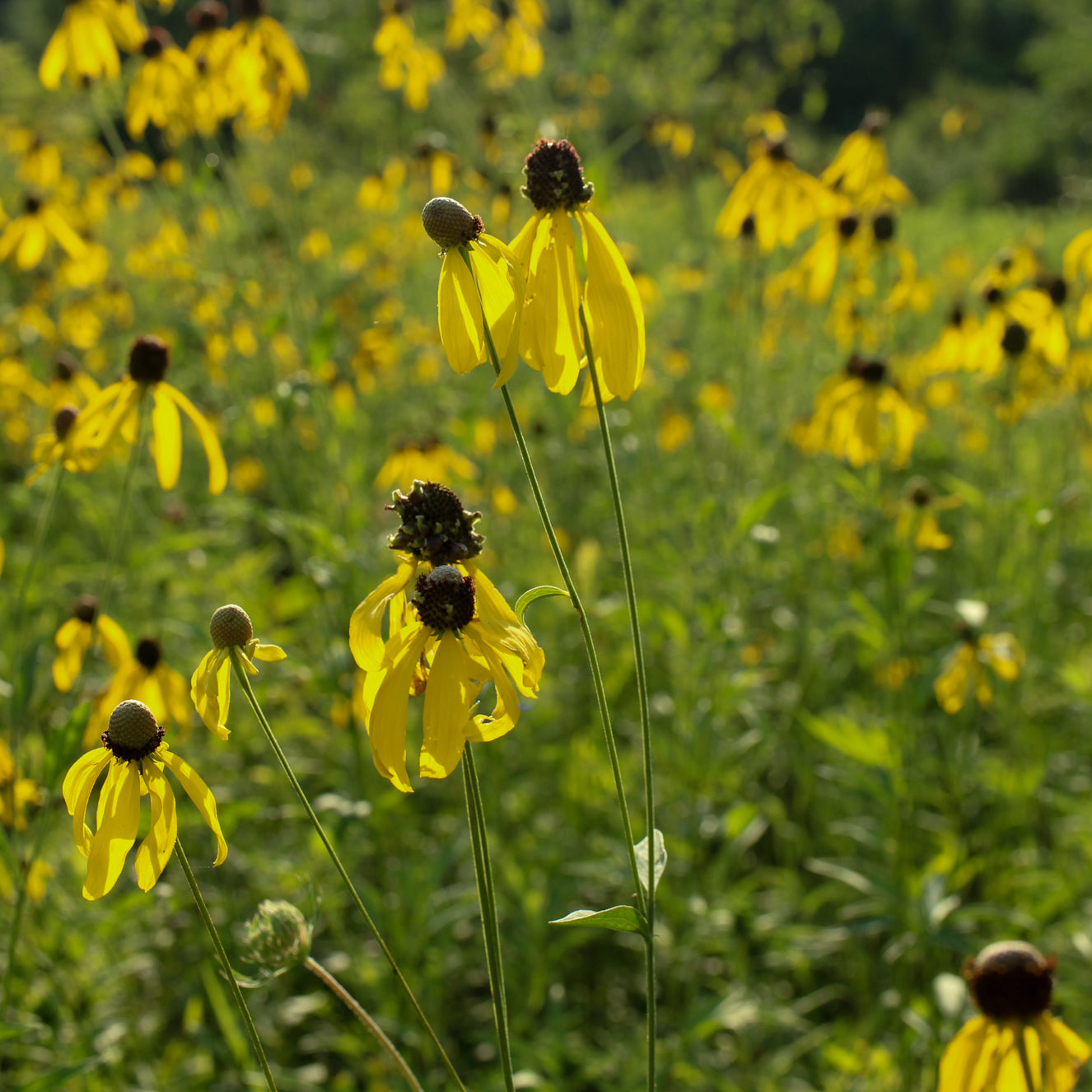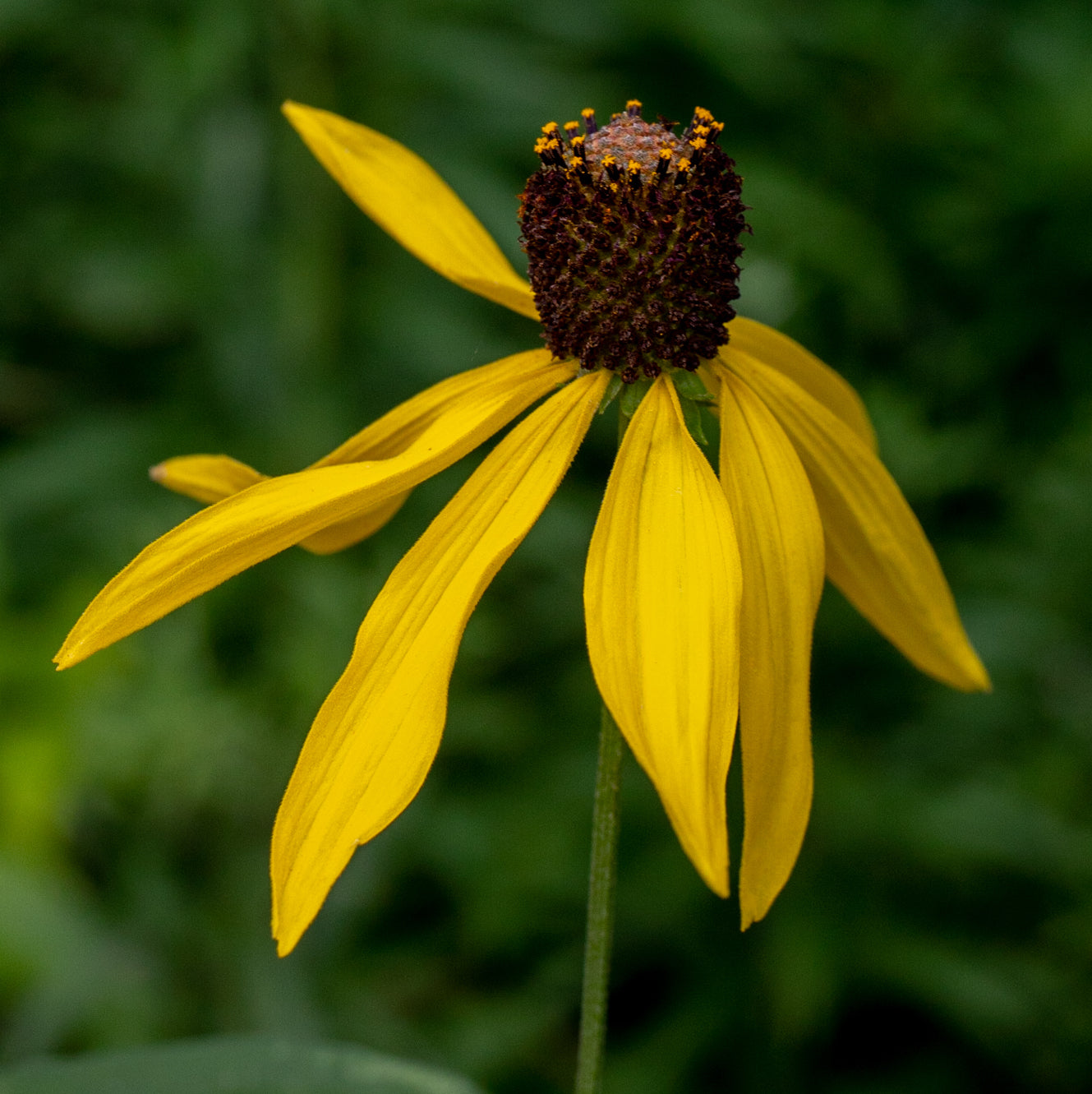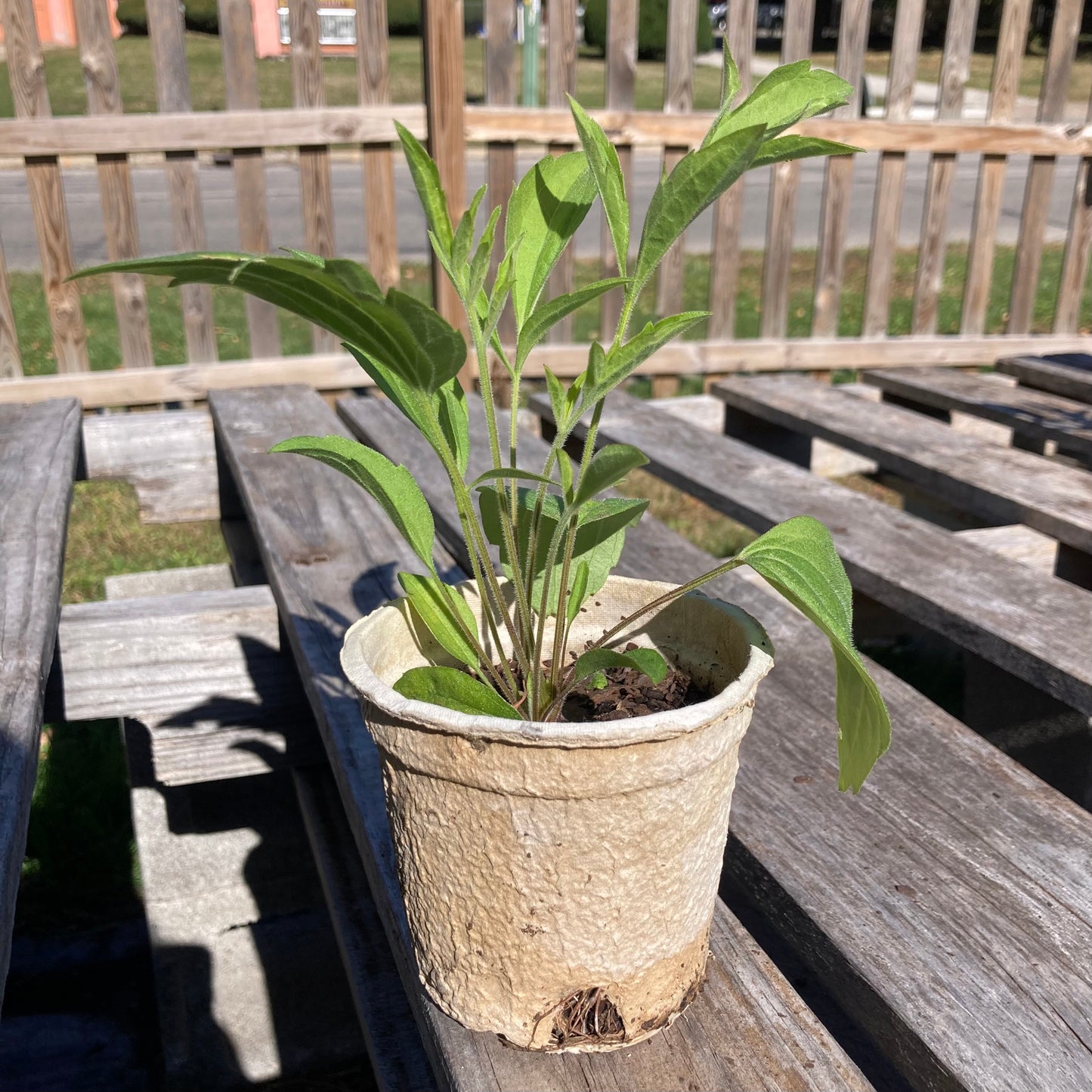Gray-headed coneflower
Ratibida pinnata
Ratibida pinnata
14 remaining
Couldn't load pickup availability
Sun/shade: Full sun
Soil moisture: Dry to medium
Height: 3-5'
Flowering period: July
Deer resistance: Medium
Amid the bright riot of the midsummer meadow, a slender stem puts forth its graceful yellow flowers, their petals draping down, idly sifting the breeze. In keeping with its carefree air, grey headed coneflower is content with a variety of growing conditions, but will do best under full sunlight and in soils of moderate to dry moisture. Within its native NE Ohio range, it inhabits meadows, fields, and woodland edges.
Blooming in July, grey-headed coneflower is part of a classic lineup of native plants that provide midsummer color to sunny gardens. These plants include purple coneflower, wild bergamot, dense blazing star, and Virginia mountain mint, among others. Grey-headed coneflower is especially useful in gardens that tend to be a bit drier, owing to its good drought tolerance. And in spite of the plant’s narrow stem, it typically remains upright without additional support.
Grey headed coneflower spreads via short rhizomes to form a tight cluster of plants. It will also spread via seed, but the seeds don’t travel far from the parent plant. To prevent seed deposition, gardeners should remove old flowers prior to seed formation.
Grey-headed coneflower is quite attractive to pollinators, including moths, small butterflies, flies, and bees. Syrphid flies are frequent pollinators whose larvae are especially useful as predators of aphids, a garden pest. The caterpillar of the wavy-lined emerald moth utilizes grey-headed coneflower as a host plant, feeding on its flowers until ready to pupate and become a moth. While foraging, the caterpillar has the fascinating and ingenious habit of covering itself in flower and leaf fragments as camouflage.
Photos by Ashley Keesling.





